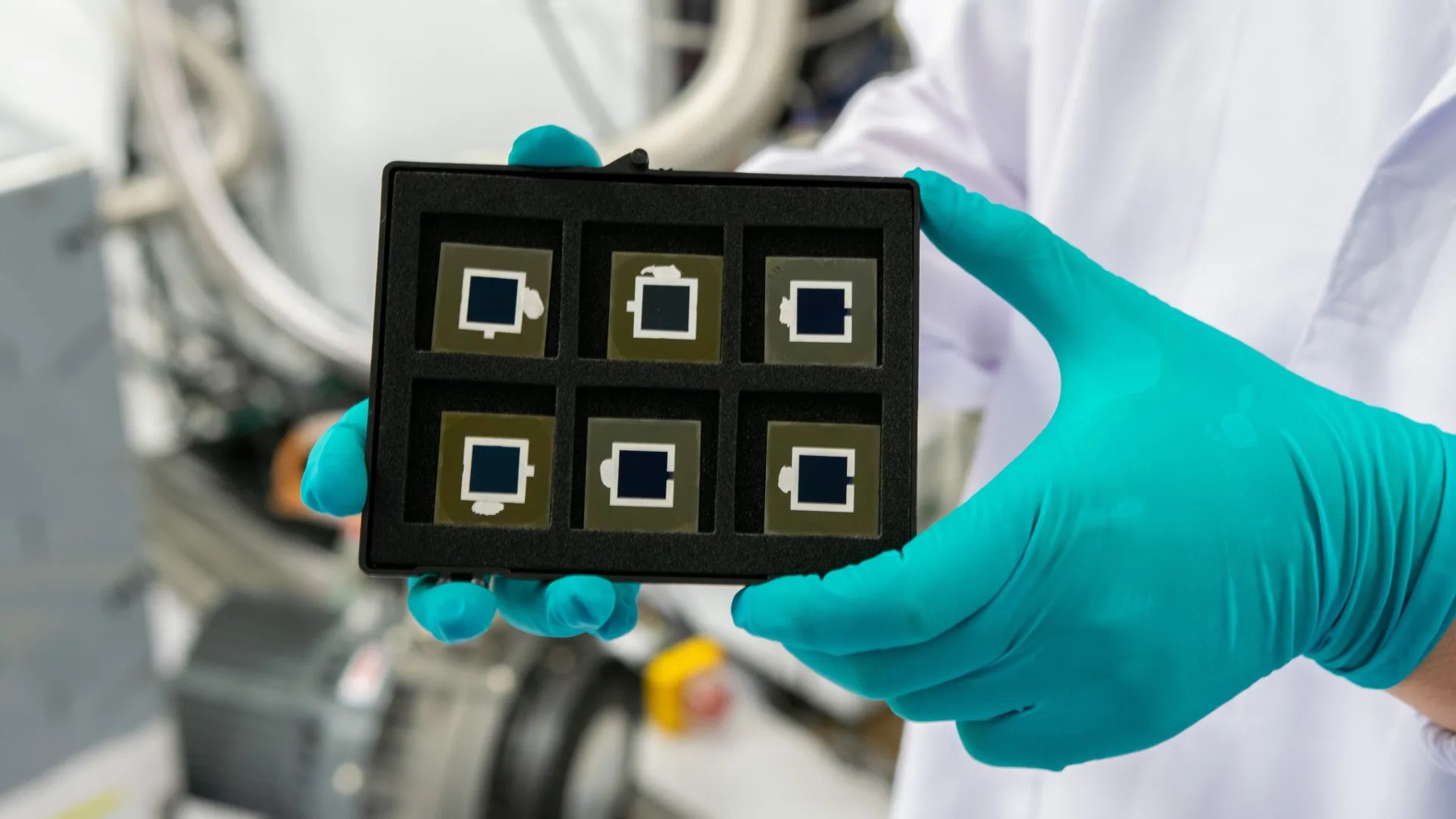This solar panel has broken a law of physics: it’s impossible and experts speak of “a new era” – ECOticias
Large-scale photovoltaic energy will not be achieved with massive parks that collapse natural ecosystems, as experts warn. The key is to innovate and “hack” the operation of cells to increase their efficiency. This is exactly what a group of scientists has just done and what they got out of hand, with a solar panel that has broken a law of physics and opens up a new generation in the way we obtain clean electricity.
Experts are on edge with this new solar panel: It shouldn’t exist, and it has broken a law of physics
NUS scientists have created the PERC-free triple-junction perovskite/silicon tandem solar cell that has been attributed a record power conversion efficiency of 27.1 % with reference to a solar energy absorption area of 1 sq cm. This advance is the best record of efficiency for such tandem solar cells to date.
To achieve this accomplishment, the research led by Hou Yi from the College of Design and Engineering at NUS and SERIS introduced a novel cyanate-integrated perovskite solar cell. The new feature improves stability and energy effectiveness and managed to avoid basic issues of multi-junction solar cell systems.
The triple-junction cell consists of three cells:
- A bottom silicon solar cell.
- A middle perovskite solar cell.
- A top perovskite cell incorporating an UWBG perovskite absorber with 5% OCN content.
27.62% efficiency and a world record: The two most powerful solar panels, compared
The introduction of OCN ions to a great extent minimizes the nonradiative recombination in the UWBG perovskite film, which helps the single-junction perovskite solar cells to possess an enhanced open-circuit voltage of 1. Therefore, a voltage level of 422 V is compared to a voltage level of 1 V.
The PCE achieved by conventional perovskite solar cells is found to be 357 V. Tested under standard illumination conditions, the triple-junction cell achieved:
- Maximum efficiency: 27.62%.
- Open-circuit voltage: 3.132 V.
- Short-circuit current density: 11.58 mA/cm2.
- Fill factor: 76.15%.
In comparison, a benchmark device without the incorporation of OCN ions achieved:
- Efficiency: 25.32%.
- Open-circuit voltage: 3.021 V.
- Short-circuit current density: 11.48 mA/cm2.
- Fill factor: 73.01%.
You may wonder: What’s the secret behind this world record? The introduction of OCN raises the open-circuit voltage from 1.357 V to 1.422 V and generates the maximum of the open-circuit voltage and thermal factor, or fill factor, of the UWBG perovskite solar cells. The cell was also able to provide approximately 80% of its initial performance as a direct current source after 300 hours.
What’s shocking is not the current solar panel, but the future: Here’s what they plan to do to bring it to the limit
This achievement, Potential pinned J/ab values of 35.1% and energy conversion efficiencies of up to 30.8% for the perovskite/silicon tandem and up to 32.9% for the perovskite/silicon triple-junction tandem devices, clearly outperforms the prior reports on all other perovskite-based triple junction tandems.
Besides, the light absorption conversion efficiency records achieved in single-j tandem solar cells, the theoretical efficiency is greater than 50%, proving the scope of improvement, especially in cases where the area of deployment is restricted.
The future work for the NUS team includes the development of the larger modules using the presented techniques.
The future work will be the innovations on interfaces and the composition of perovskite, to move forward in this groundbreaking innovation. Thus, analysis of the new perovskite’s atomic structure offered experimental confirmation of cyanate’s involvement in the stabilization of the structure and the formation of necessary interactions in the perovskite.
This solar panel demonstrates how we still have a long way to go to understand this energy, which, although it is the most generated of the renewables, is still a mystery in many ways. One of them continues to be the perfect material for photovoltaic cells, which is still neither silicon nor perovskite, but neither diamond, as we discussed the other day (nobody would forget a material like this for panels, don’t you think?).


